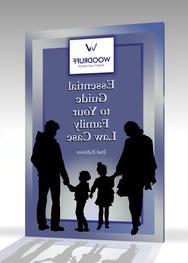Pensions – Defined Benefit Plans under Bishop
It is necessary for the court to classify and determine the value of any asset in equitable distribution cases; this includes retirement benefits, pensions, and other deferred compensation plans. This section mostly deals with defined benefit plans under Bishop.
ClassificationCourts make classification determinations based on numerous requirements and statutory guidelines, including the type of account, the date it was opened or started, and whether the benefit is vested or unvested. Based on these and other factors, courts will qualify assets as marital, separate, or divisible. Even pensions that are determined to be separate property may still be included in the equitable distribution decision as a distributional factor1.
ValuationWhen valuating defined benefit plans, courts must often consider the employer’s work requirements, the plan’s solvency, and the contributing spouse’s life expectancy. There are some court-accepted methods in North Carolina for cases in which pension and other plan valuations are necessary. Despite the supported use of certain calculation methods, this process can easily become a tangled web of data and complexities, especially when one or both spouses have high-value assets.
DistributionParties can agree on how their pensions will be divided in a divorce. However, if no consensus is reached, the courts can use two methods for dividing these assets. The pension can be awarded to the contributing or employee-spouse, with the other spouse receiving marital property that offsets the value. Alternatively, courts may simply divide the benefits equitably.
If you have questions about how your assets may be classified, valued, or distributed, consider discussing your case with a Greensboro divorce lawyer at Woodruff Family Law Group. Family law specialists can be valuable resources no matter what stage of the separation or divorce process you are in.
Bishop v. BishopThe parties in Bishop v. Bishop2 sought equitable distribution of several of Defendant’s assets, including his pension benefit – a defined benefit plan. The trial court ruled that Defendant’s pension benefit would remain Defendant’s property, and that a lump sum amount of $7,785 was due to Plaintiff.
Plaintiff appealed, but the appeals court determined that the trial court applied the correct method, based on retirement age and date of separation, when valuating Defendant’s pension. However, the appeals court did find that the lower court erred by using the wrong retirement age in its computations.
The North Carolina Court of Appeals applies certain rules for evaluating pension plans. The trial court must complete several steps in these cases, which the appeals court reviews, including the following:
- Calculate the monthly pension payment the employee-spouse is entitled to as of the date of separate or earliest retirement age, which comes last
- Determine the life expectancy of the employee-spouse
- Reduce the current value of the pension based on certain contingencies
These and other decisions are based on the trial court’s judgment. In the Bishop case, the court of appeals found that the lower court made a mistake when determining the date of retirement.
- 1N.C. Gen. Stat. § 50-20. http://casetext.com/statute/general-statutes-of-north-carolina/chapter-50-divorce-and-alimony/article-1-divorce-alimony-and-child-support-generally/section-50-20-distribution-by-court-of-marital-and-divisible-property
- 2Bishop v. Bishop, 113 N.C.App. 725, 440 S.E.2d 591 (N.C. App. 1994). http://casetext.com/case/bishop-v-bishop-76

 Woodruff Family Law Group Home
Woodruff Family Law Group Home










